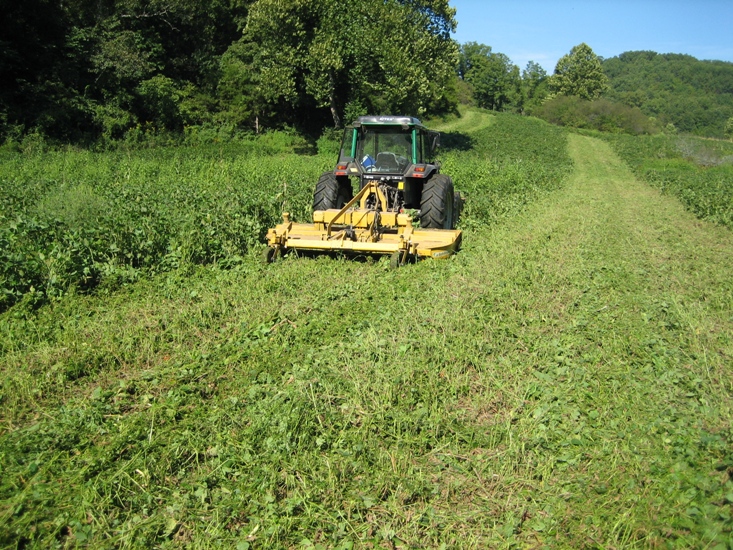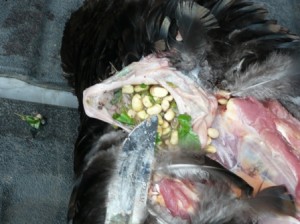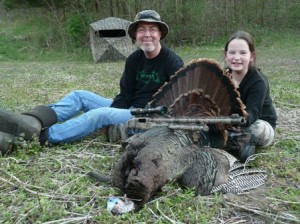Year Round Food Plots: The Magic Bean!
Filed under: Deer Hunting, Food Plots, Hunting Blog, Turkey Hunting
I was part of a panel at a national convention years ago when a member of the audience asked each member of the panel what they thought was the “magic bean” for food plots. Each member of the panel except me offered a suggestion like clover, brassicas, peas, etc. I refused to answer. I agreed with my colleagues that each of the crops they mentioned had good characteristics, but each also had obvious limitations.
 In the decade or so that has passed since that conference I’ve designed, established, maintained and/or evaluated literally 1,000’s of acres of food plots planted in dozens of different crops. Some of those crops proved to be totally unused by deer or the preferred species of game (hence a weed for the food plot mission) or their ability to produce substantial high quality forage was limited, or limited to a very small geographic area.
In the decade or so that has passed since that conference I’ve designed, established, maintained and/or evaluated literally 1,000’s of acres of food plots planted in dozens of different crops. Some of those crops proved to be totally unused by deer or the preferred species of game (hence a weed for the food plot mission) or their ability to produce substantial high quality forage was limited, or limited to a very small geographic area.
During that time I was introduced to forage soybeans. The first plot of forage soybeans I planted was in Mississippi. I remember being amazed at the tonnage of forage. During late August the forage was mowed and I advised the landowner to plant a common winter crop such as wheat. During the next few years I planted or advised more folks to plant forage soybeans as the yield of high quality forage was better than any other crop during the growing season. Years later, I noted that the Eagle Seed forage soybeans were producing a tremendous amount of pods!
A good stand of winter wheat will yield 1,200 to 1,600 pounds of forage per acre. One very poor crop of Eagle Seed forage soybeans (30 bushels per acre) yields 1,800 pounds of high quality grain (soybeans) per acre. I realized that when I mowed the Eagle Seed soybean forage during the early fall, I was mowing down more high quality winter food than what the next crop would likely produce! The beans were already available while I or my clients had to pay for the labor, seed, and fertilizer to gamble to produce another crop.
I’ve now practiced for years a strategy of establishing a high quality crop of forage soybeans and allowing deer and turkey to forage on the vegetation throughout the growing season. Then I leave the crop standing and allow the same critters to consume the seed pods throughout the winter. The crop literally can provide high quality food until it is time to prepare for planting another crop the following spring.

 Forage soybeans can produce high quality food for 11 months, from one planting and one expense. I was reminded of the huge advantages of forage soybeans while I was cleaning a gobbler my oldest daughter, Raleigh (age 12), harvested this past weekend. After removing the gobbler’s breast, I opened the crop to see what he had been eating. We call this scouting from the skinning shed. By seeing what critters are currently eating, a hunter can accurately predict where other members of the same species will be consuming the next few days. Raleigh’s turkey was full of soybean seeds! Using this M.R.I. (Most Recent Information), I took my youngest daughter, Rae (age 9) hunting that afternoon. We selected a location overlooking a forage soybean field that had been planted the previous spring. She harvested a mature gobbler there that afternoon.
Forage soybeans can produce high quality food for 11 months, from one planting and one expense. I was reminded of the huge advantages of forage soybeans while I was cleaning a gobbler my oldest daughter, Raleigh (age 12), harvested this past weekend. After removing the gobbler’s breast, I opened the crop to see what he had been eating. We call this scouting from the skinning shed. By seeing what critters are currently eating, a hunter can accurately predict where other members of the same species will be consuming the next few days. Raleigh’s turkey was full of soybean seeds! Using this M.R.I. (Most Recent Information), I took my youngest daughter, Rae (age 9) hunting that afternoon. We selected a location overlooking a forage soybean field that had been planted the previous spring. She harvested a mature gobbler there that afternoon.
By using the technique of scouting from the skinning shed, I was able to confirm that Eagle Seed forage soybeans provide high quality food (forage with high quality protein during the summer and seeds with high quality energy during the winter) at least 11 months throughout the year.
If I was asked the same question at a conference again today, I would have a much better idea of what the “magic bean” is for wildlife food plots. It is a forage soybean that also produces gads of grain.
Growing Deer together,
Grant



